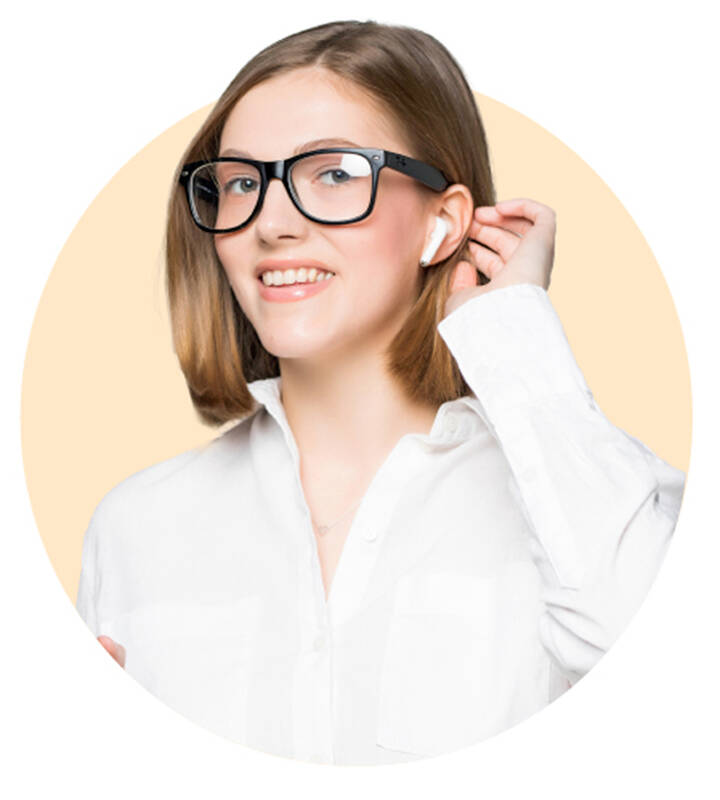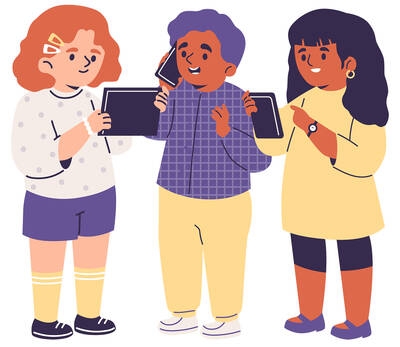The story of personal audio equipment begins in the late 1800s, shortly after the invention of the telephone and the loudspeaker. Businessmen recognized that with these technologies, live music could be shared with people far away from a concert hall. However, loudspeakers in public places can be an annoyance, which is still the case today.
This problem led to the invention of the Electrophone system by a British company. The Electrophone used telephone lines to deliver live performances from theaters and opera houses across London. The Electrophone service was a subscription-based model where subscribers rented special listening devices similar to doctors’ stethoscopes. They were made up of two earpieces which connect together below the chin. Since the service provided a novel form of entertainment, it was popular among the wealthy at the time.
The next breakthrough was made by an American inventor named Nathaniel Baldwin in 1910. He invented a prototype telephone headphone in his kitchen. The headphone consists of two speakers connected by a band. Such a design is similar to the headphones we are familiar with today. After several tests and adjustments, this device was put into use in the US Navy.

Photo: Ivy English 照片:常春藤
Fast-forward to 1937, when the first dynamic headphones were being produced in Germany by an engineer named Eugen Beyer. The DT 48 headphones significantly improved sound quality. With pads for the ears, the design was also more comfortable than Baldwin’s invention.
In the 1950s, a jazz musician named John C. Koss introduced stereo technology to personal headphones, making the sound from the device more realistic. Later advances in battery technology led to smaller radios. As audio systems decreased in size, new designs of headphones were released one after another.
個人聲音設備的故事起始於1800年代末期,就在電話和喇叭發明後不久。商人意識到有了這些科技,現場音樂便能與離音樂廳很遙遠的人們分享。然而,在公共場所使用喇叭可能很擾人,這在現今仍是如此。
這個問題促使一間英國公司發明Electrophone系統。Electrophone使用電話線將戲院和歌劇院的現場表演傳播至倫敦各地。Electrophone服務是訂閱制的方式,訂閱者租借類似於醫師聽診器的特殊聆聽裝置。這些裝置是由在下巴下方連接起來的兩個聽筒組成。因為這項服務提供了新穎的娛樂方式,當時在富人之間很流行。
下一項突破是由名為納撒尼爾.鮑德溫的美國發明家於1910年所創。他在自家廚房發明出電話式耳機的原型。這個耳機有兩個喇叭,是由一條帶子所連接。這樣的設計相似於我們如今熟悉的頭戴式耳機。在多次測試和調整後,這個裝置被美國海軍使用。
時間快轉到1937年,當時第一款動圈耳機(編按:動圈耳機的發聲原理為環形線圈經通電後,會變成電磁鐵,形成磁力產生交互作用,震動耳機的膜片,從而發出聲音)在德國由一位名為尤根.拜耳的工程師製造出來。DT48耳機大大改善了音質。有了放在耳朵上的墊子,這個設計也比鮑德溫的設計更加舒適。
在1950年代,爵士音樂家約翰.C.寇斯將立體聲技術引進個人耳機中,使得從該裝置放出來的聲音更為逼真。後來電池技術的發展帶來更小的收音機。隨著聲音系統的體積愈來愈小,新的耳機設計也陸續誕生。
Words in Use
1. audio a. 聲音的
Audio messaging is a means of communication using voice instead of writing text.
語音訊息是一種溝通方式,使用聲音而非寫文字。
2. equipment n. 設備,器材
The film crew packed their equipment, including cameras and lighting gear, for the shoot.
該攝影團隊準備拍攝需要用的器材,包含攝影機和燈光設備。
3. invention n. 發明,創造
inventor n. 發明者
invent vt. 發明,創造
The invention of the Internet has connected people around the world.
網路的發明連結了世界各地的人。
The chef constantly invents unique dishes.
這位廚師不斷創造出獨特的菜色。
4. concert n. 音樂會,演奏會
a concert hall 音樂廳
While all of the performers were taking a bow, applause filled the concert hall.
所有演員在謝幕時,掌聲響遍整個音樂廳。
5. performance n. 表演,演出
a live performance 現場表演∕演出
Live performances allow performers to interact with audiences.
現場表演讓表演者得以與觀眾互動。
Practical Phrases
1. A is made up of B A由B組成
= A consists of B
Each class at this school is made up of 15 boys and 15 girls.
這所學校的每個班級由十五位男孩和十五位女孩組成。
2. be familiar with... 熟悉……
Many people are familiar with the brand since its ads can be seen almost everywhere.
許多人都很熟悉該品牌,因為它的廣告幾乎隨處可見。
3. put... into use 使用∕應用……
Tests should be done before the software is put into use.
要使用該軟體前應先做測試。
4. fast-forward to + 時間 快轉到某時
fast-forward vi. 快轉
This semester is so rough; I wish I could just fast-forward to summer vacation.
這學期真是艱難;我希望能快轉到暑假。
To be continued tomorrow(明日待續)
https://www.taipeitimes.com/News/lang
聽文章朗讀及講解: https://ivy.pse.is/455bfu
本文出自常春藤解析英語雜誌: www.ivy.com.tw

In an effort to fight phone scams, British mobile phone company O2 has introduced Daisy, an AI designed to engage phone con artists in time-wasting conversations. Daisy is portrayed as a kindly British granny, exploiting scammers’ tendency to target the elderly. Her voice, based on a real grandmother’s for authenticity, adds to her credibility in the role. “O2” has distributed several dedicated phone numbers online to direct scammers to Daisy instead of actual customers. When Daisy receives a call, she translates the scammers’ spoken words into text and then responds to them accordingly through a text-to-speech system. Remarkably, Daisy

Bilingual Story is a fictionalized account. 雙語故事部分內容純屬虛構。 Emma had reviewed 41 resumes that morning. While the ATS screened out 288 unqualified, she screened for AI slop. She could spot it a mile away. She muttered AI buzzwords like curses under her breath. “Team player.” “Results-driven.” “Stakeholder alignment.” “Leveraging core competencies.” Each resume reeked of AI modeling: a cemetery of cliches, tombstones of personality. AI wasn’t just changing hiring. It was draining the humanity from it. Then she found it: a plain PDF cover letter. No template. No design flourishes. The first line read: “I once tried to automate my

Every May 1, Hawaii comes alive with Lei Day, a festival celebrating the rich culture and spirit of the islands. Initiated in 1927 by the poet Don Blanding, Lei Day began as a tribute to the Hawaiian custom of making and wearing leis. The idea was quickly adopted and officially recognized as a holiday in 1929, and leis have since become a symbol of local pride and cultural preservation. In Hawaiian culture, leis are more than decorative garlands made from flowers, shells or feathers. For Hawaiians, giving a lei is as natural as saying “aloha.” It shows love and

1. 他走出門,左右看一下,就過了馬路。 ˇ He walked outside, looked left and right, and crossed the road. χ He walked outside and looked left and right, crossed the road. 註︰並列連接詞 and 在這句中連接三個述語。一般的結構是 x, y, and z。x and y and z 是加強語氣的結構,x and y, z 則不可以。 2. 他們知道自己的弱點以及如何趕上其他競爭者。 ˇ They saw where their weak points lay and how they could catch up with the other competitors. χ They saw where their weak points lay and how to catch up with the other competitors. 註:and 一般連接同等成分,結構相等的單詞、片語或子句。誤句中 and 的前面是子句,後面是不定詞片語,不能用 and 連接,必須把不定詞片語改為子句,and 前後的結構才相等。 3. 她坐上計程車,直接到機場。 ˇ She took a cab, which took her straight to the airport. ˇ She took a cab and it took her straight